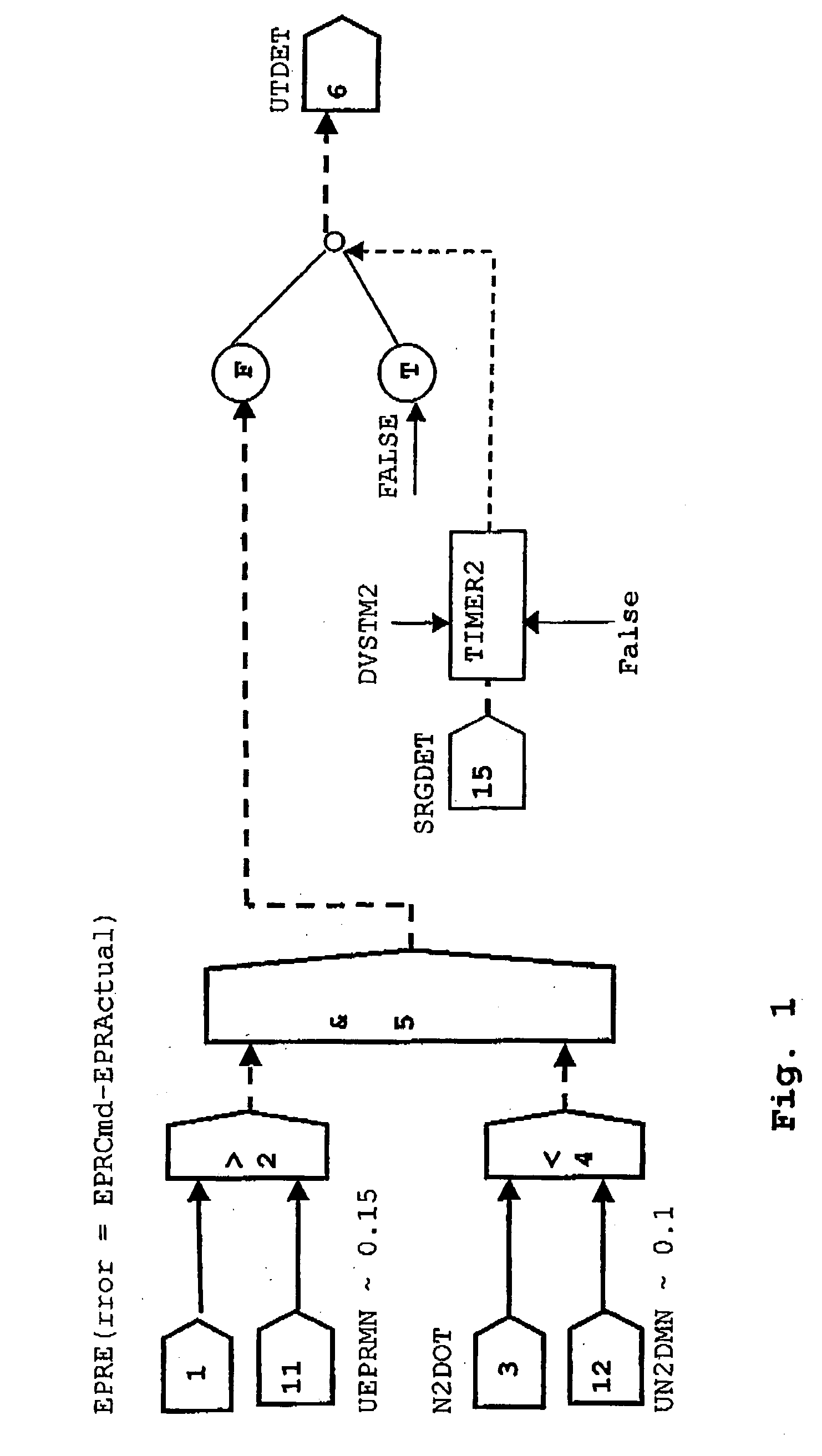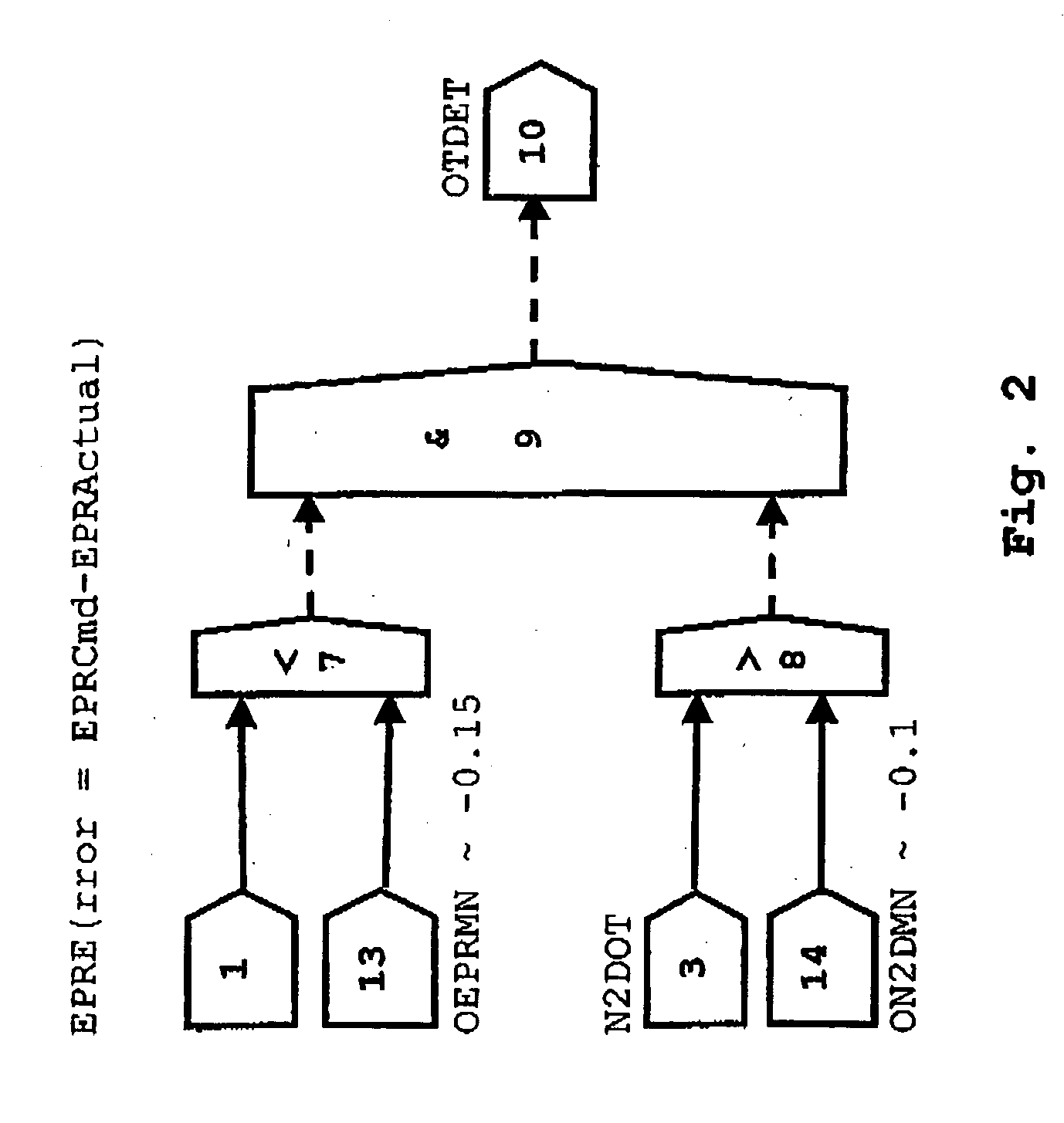Fault detection logic for engines
- Summary
- Abstract
- Description
- Claims
- Application Information
AI Technical Summary
Benefits of technology
Problems solved by technology
Method used
Image
Examples
Embodiment Construction
[0013] The term “underthrust” as used herein designates a lower thrust than that commanded by the pilot via the thrust lever setting, while the term “overthrust” conversely refers to a higher thrust than that commanded. Overthrust and underthrust are caused by a fault in the control system and denote a loss of thrust control (LOTC) which must be recognized and indicated and to which the control system must respond appropriately.
[0014] As shown in FIG. 1 and FIG. 2, the difference ±EPRerror between the command value and the actual value is determined in step 1 as the first control parameter from the actual value of the engine pressure ratio (EPRactual) between the outlet and the inlet of the engine as a measure of the thrust and from the set command value of the engine pressure ratio (EPRcmd) as a measure of the demanded thrust. If the difference is positive, more fuel will be delivered via a fuel-metering unit (not shown) to the engine combustion chamber and the engine will be acce...
PUM
 Login to View More
Login to View More Abstract
Description
Claims
Application Information
 Login to View More
Login to View More - R&D
- Intellectual Property
- Life Sciences
- Materials
- Tech Scout
- Unparalleled Data Quality
- Higher Quality Content
- 60% Fewer Hallucinations
Browse by: Latest US Patents, China's latest patents, Technical Efficacy Thesaurus, Application Domain, Technology Topic, Popular Technical Reports.
© 2025 PatSnap. All rights reserved.Legal|Privacy policy|Modern Slavery Act Transparency Statement|Sitemap|About US| Contact US: help@patsnap.com



